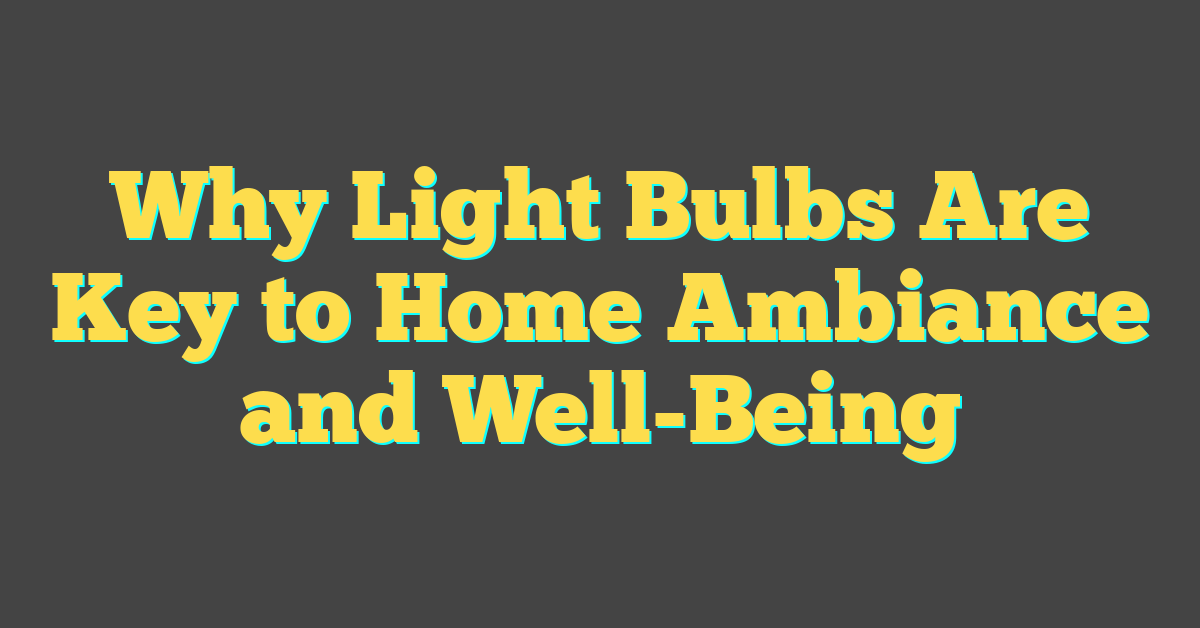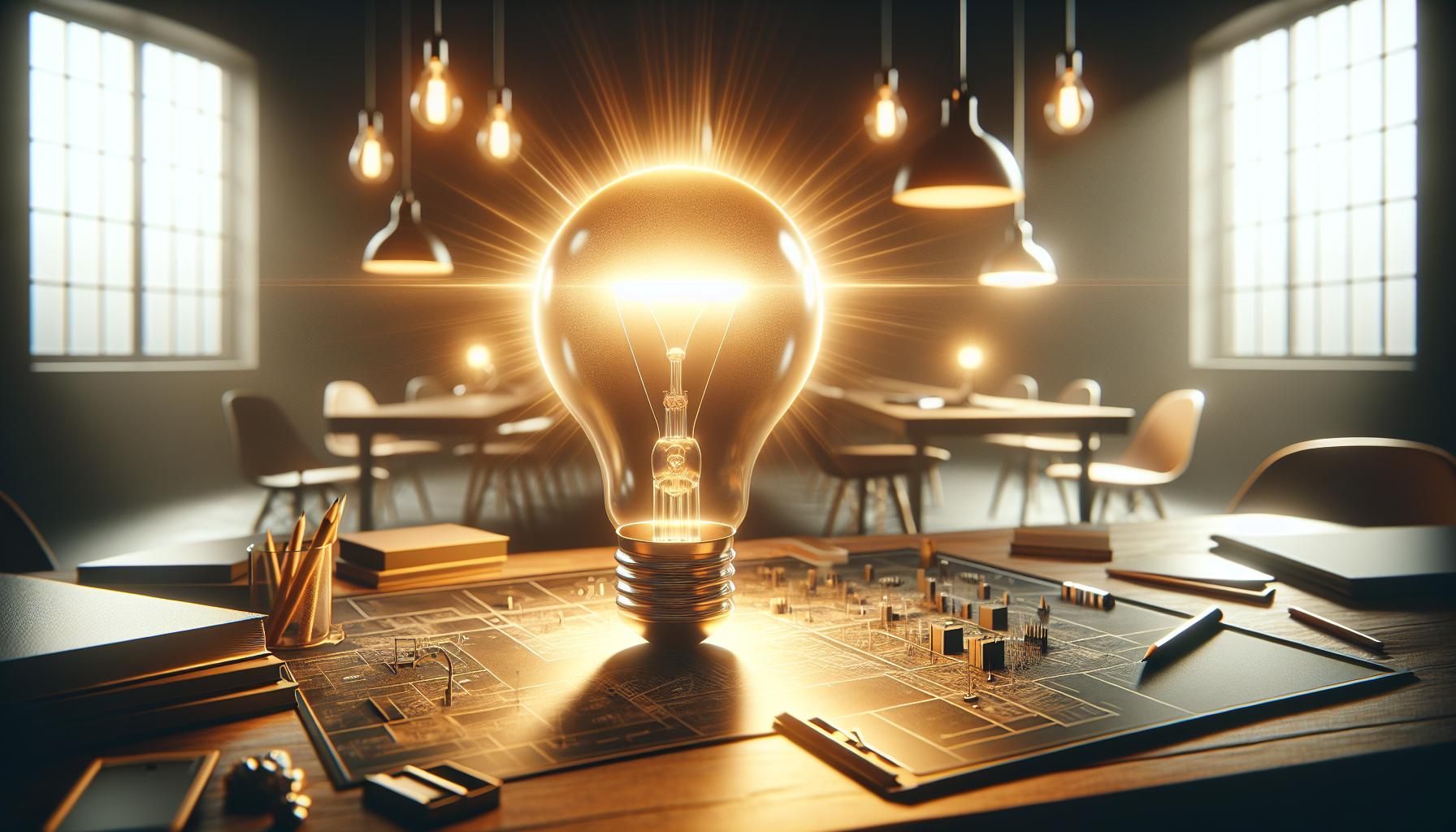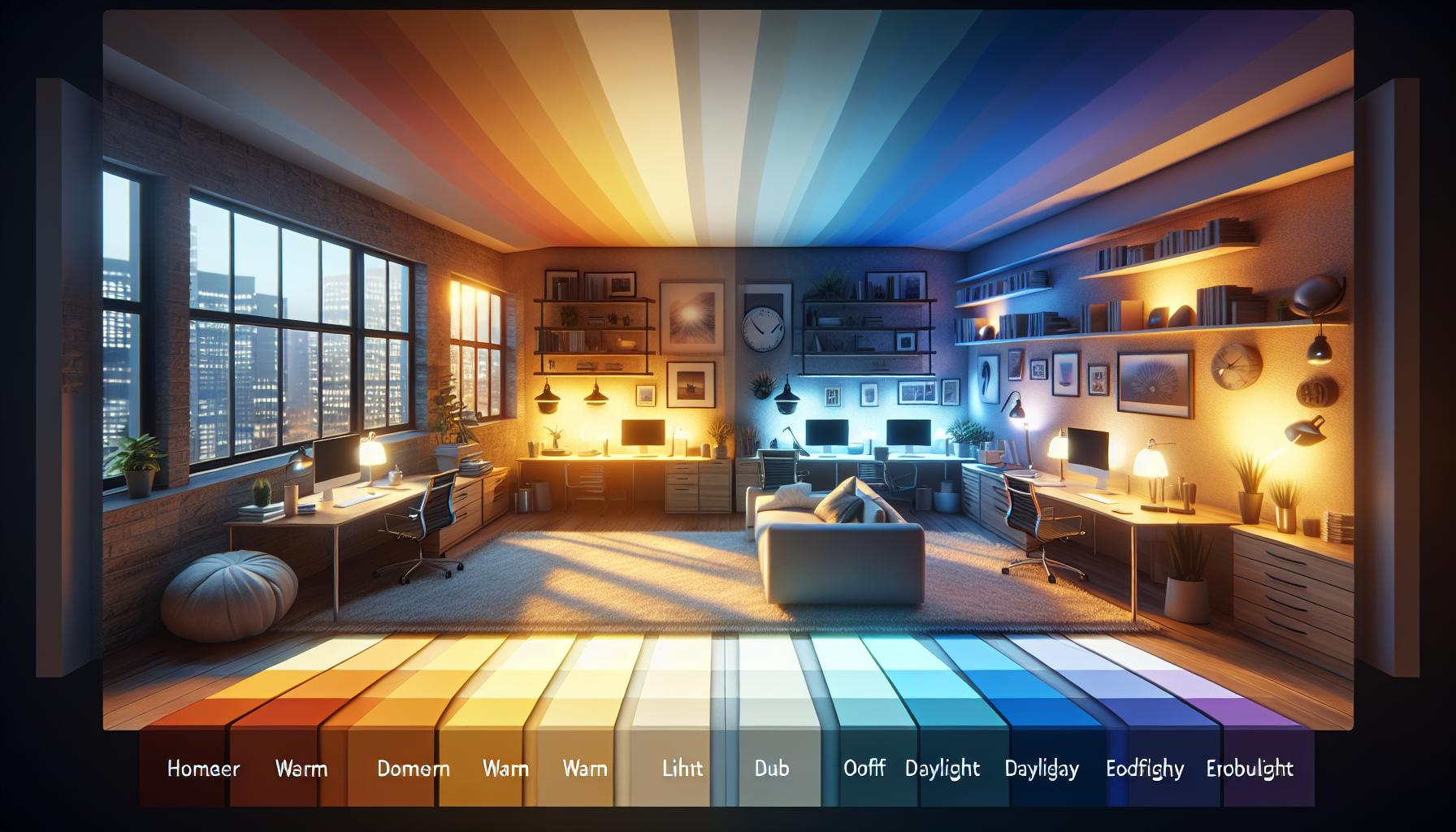Imagine your life without the humble light bulb. It’s hard, isn’t it? Light bulbs are so integral to your daily life that you might take them for granted. They’ve revolutionized the way you live, extending your days beyond the sunset and banishing shadows from every corner of your home.

They’re not just about visibility; light bulbs have a profound impact on your mood and productivity. The right lighting can transform a space from a dreary cave into a warm, inviting room. They’re the unsung heroes in your quest for comfort and efficiency, silently shaping your environment and your experiences within it.
From the moment you flick the switch in the morning, to the soft glow that lulls you to sleep, light bulbs are your constant companions. Let’s shed some light on why these everyday wonders are so crucial to your life.
The History of Light Bulbs
Have you ever wondered about the origins of the light bulb? Your world, filled with artificial light at the flick of a switch, wasn’t always so brilliantly luminous. The journey from darkness to a well-lit home is a fascinating story.
In the beginning, it was all about experimentation and discovery. Picture yourself back in the early 1800s trying to read by the flickering light of a candle. Not ideal, right? The inception of the light bulb can be traced back to inventors like Humphry Davy. He created the first electric light in 1802 using a piece of carbon and a battery—this was known as the electric arc lamp.
As you delve deeper into the 19th century, numerous inventors across the globe tinkered with designs that would eventually lead to the light bulbs you’re familiar with. Thomas Edison is often credited with the invention of the first commercially practical incandescent light, but he wasn’t alone in the race. Others, like Joseph Swan in England, were working on similar innovations. The key breakthrough was finding a material that would glow brightly when heated by an electric current but wouldn’t melt or burn too quickly.
| Year | Inventor | Contribution |
|---|---|---|
| 1802 | Humphry Davy | Created the first electric arc lamp |
| 1879 | Thomas Edison | Developed the first practical incandescent bulb |
| 1880 | Joseph Swan | Independently produced a similar light bulb |
By combining efforts and building on each other’s work, these early pioneers paved the way for the first commercially available light bulbs.
- Incandescent bulbs
- Fluorescent tubes
- Compact fluorescent lamps (CFLs)
- Light-emitting diodes (LEDs)
Each step forward was driven by the desire to improve efficiency and reduce costs. Innovations in lighting technology have continued to shape the way you light up your DIY projects, providing clearer, more consistent light that’s essential for precise work.
The Importance of Light Bulbs in Daily Life

Ever stopped to think about just how central light bulbs are to your daily routine? From the moment you flick on the switch in the morning, those little beacons of brightness are what make your day possible. Consider some of the most common ways light bulbs touch your life:
- Safety and Security: Well-lit homes and streets deter crime and prevent accidents. When you’re navigating your way through your house at night, it’s the bulbs overhead that ensure you don’t take a misstep.
- Health and Well-being: Natural light’s not always available, but thanks to light bulbs, you can maintain a consistent light cycle, crucial for your circadian rhythms. Vitally, specific bulbs can even emit light that mimics daylight, helping to combat Seasonal Affective Disorder (SAD).
- Productivity: Whether you’re hammering away at a report in your home office or you’re elbows deep in your latest DIY project, proper lighting means you can focus better and work more efficiently. Poor lighting leads to eyestrain and fatigue, but with the right lumens blazing, you’ll nail those fine details.
- Aesthetics and Ambiance: Ever notice how warm lighting makes a room feel cozy? Or how certain bulbs make the colors in your artwork pop? That’s light doing its magic. It’s an essential tool in interior design, transforming spaces visually and emotionally.
Consider more subtle ways bulbs play a role: they’re in your fridge, your car, on your porch. They blink on the devices you use, guide planes on runways, and even help plants grow. These bright spots are not just for seeing—they’re beacons that guide, protect, and add vibrancy to life.
As technology advances, so do the capabilities of these illuminating marvels. Smart bulbs that sync with your sleep schedule or change colors with your music, for example, show how they continue to evolve past mere functionality. They’re integral, not just in the tasks you do but in creating the very atmosphere you live in.
Next time you unscrew an old bulb or install a smart system, take a moment to appreciate this marvel of human innovation. Light bulbs don’t just dispel darkness; they enhance and protect, making modern life not only possible but also enjoyable.
The Impact of Light Bulbs on Mood and Productivity

Imagine flipping a switch and your mood brightens, your focus sharpens, and your productivity soars. That’s the power light bulbs hold over us. Light quality affects how you feel and function, and the right bulb can make all the difference. As a lighting connoisseur and DIY enthusiast, you know the profound effect illumination can have on a space.
« Why Light Bulbs Don’t Last: Uncover the Surprising Reasons & Solutions
How to Keep Light Bulbs from Sticking in the Socket: The Potato Trick Revealed »
Different light temperatures play significant roles in shaping our emotions and performance. Warm lights often evoke a sense of comfort and relaxation, making them perfect for living areas where you unwind. On the other hand, cool white lights mimic daylight and are associated with alertness and increased concentration, ideal for offices and workspaces.
Let’s dive into some specifics. Studies suggest that exposure to blue light, prevalent in cool white bulbs, may hinder melatonin production, which affects sleep. However, during the day, that same blue light can boost your attention span, reaction times, and mood. Smart use of light bulbs can create an optimal environment tailored to the activity at hand.
Here’s a simple breakdown of the light temperature scale:
| Kelvin Range | Light Quality | Suggested Use |
|---|---|---|
| Below 3000K | Warm, Soft White Light | Bedrooms, Living Rooms |
| 3100K to 4500K | Cool White | Kitchens, Bathrooms, Garages |
| Above 4600K | Daylight | Offices, Craft Rooms |
Implementing the right lighting scheme in your home or workplace can lead to a noticeable uptick in your overall well-being and productivity. Whether you’re hammering away at a DIY project or crunching numbers for work, remember to consider the Kelvin scale and adjust your light sources accordingly. Brighter days are literally at your fingertips, and sometimes it’s as simple as changing a light bulb.
Next time you undertake a lighting project, pay close attention to the ambiance you want to create. Keep that energy flowing and tailor your lighting to fit the rhythm of your life, ensuring every lit corner meets your needs.
Transforming Spaces with the Right Lighting

When you’re knee-deep in your latest DIY home project, the transformative power of lighting should never be underestimated. Light bulbs are far more than functional necessities; they’re a designer’s secret weapon, capable of altering the appearance and atmosphere of any space with the flick of a switch.
Imagine entering a room bathed in a soft glow that beckons you to unwind; this is the magic of warm light. It spruces up living rooms and bedrooms by adding a cozy feel that’s perfect for curling up with a book or enjoying a laid-back evening. Now picture the crisp vibrancy of cool white light in a home office or kitchen, where every detail is crucial, and efficiency is of the essence. This is where cooler temperatures really shine, no pun intended!
But what if you’re juggling multiple uses in one area? That’s where adjustable lighting comes into play. The advent of smart lighting systems means you’re no longer bound by a single lighting scheme. With dimmable LEDs and smart bulbs, you can tailor the brightness and temperature to suit the activity at hand, whether it’s meal prepping in high focus or hosting an intimate dinner party.
And let’s talk aesthetics—lighting fixtures themselves are often art pieces, contributing to the room’s overall decor. Consider how a vintage Edison bulb adds character to a modern minimalist setting or how recessed lighting can give your ceiling a sleek, uncluttered look.
In addition to aesthetics, it’s crucial to remember the health benefits of proper lighting. Insufficient lighting can strain your eyes and diminish your energy levels, while the right balance can lead to improved concentration and a happier state of mind.
Here’s a quick tip: When choosing light bulbs, take note of the lumens, not just the watts. Lumens measure the amount of light emitted, providing a true indicator of the brightness you can expect.
Creating the perfect ambiance is an art form. Your lighting choices can dramatically improve the functionality and mood of the spaces you inhabit. So go ahead, play around with different fixtures, temperatures, and positions. Discover the unique alchemy of light in transforming your home into a sanctuary of style and comfort.
Conclusion
So, light bulbs aren’t just about seeing in the dark—they’re about creating a home that’s a reflection of your style and needs. Whether you’re curling up with a book under a warm glow or powering through a work project in cool white light, the right bulb makes all the difference. Don’t underestimate the impact of lighting on your mood and productivity. Go ahead, play around with bulbs and fixtures to find that sweet spot where functionality meets your personal aesthetic. It’s your space, after all, and you deserve the perfect ambiance to make it truly yours.
Frequently Asked Questions
What is the impact of lighting on home design?
Lighting has a transformative power on home design by altering the atmosphere and appearance of a space. Warm lights can evoke a cozy feel, while cool white lights are believed to promote efficiency and focus.
Can changing light bulbs affect a room’s ambiance?
Yes, different types of light bulbs can significantly change a room’s ambiance. Warm lights tend to create a cozy and inviting atmosphere, while cool white lights can make a space feel more focused and efficient.
What are the benefits of adjustable lighting?
Adjustable lighting offers the flexibility to change the brightness and intensity of light based on the time of day, mood, or specific task at hand, enhancing both functionality and ambiance in a space.
How do lighting fixtures contribute aesthetically to home decor?
Lighting fixtures contribute to home decor by serving as both functional lighting sources and as decorative elements that can complement and enhance the style of a room.
Why is proper lighting important for health and well-being?
Proper lighting is crucial for health and well-being because it can affect mood, productivity, and even physiological functions such as sleep patterns.
Should I experiment with lighting choices in my home?
Absolutely, experimenting with different lighting choices allows you to discover the perfect balance and ambiance for each room in your home, enhancing comfort and style.




